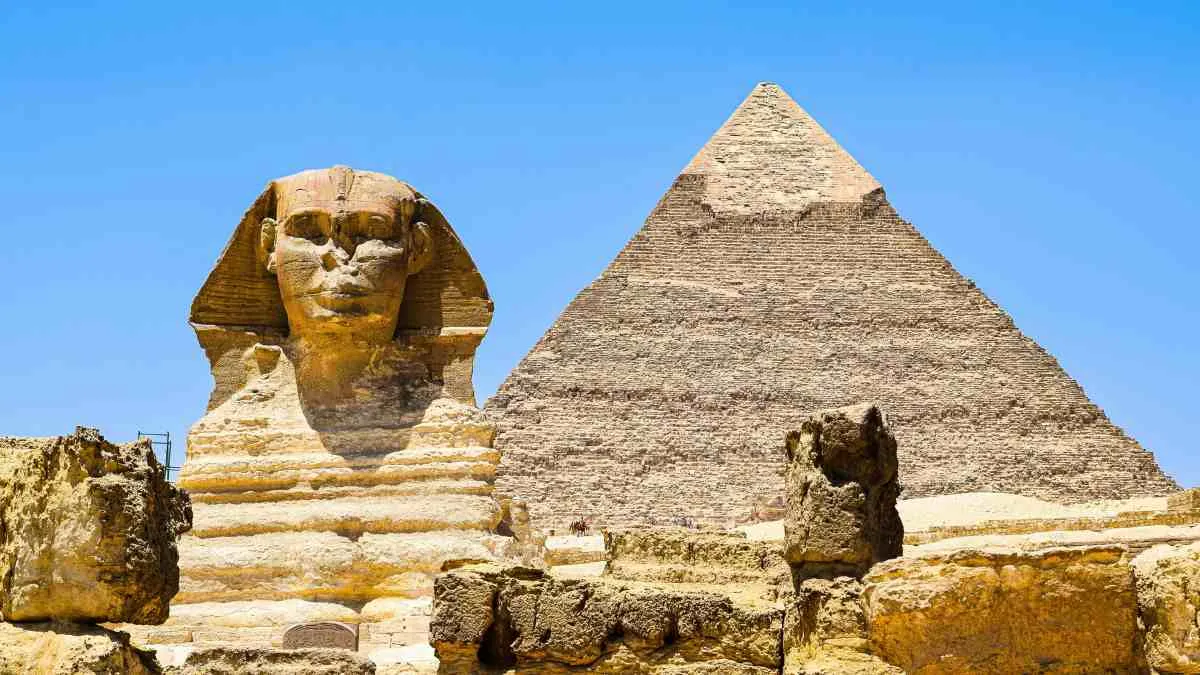Giza's Great Pyramid is one of the most extraordinary achievements of ancient engineering and architecture. Cairo, located in Egypt, is a vast structure that was formed 4,500 years ago and continues to amaze historians, archaeologists, and visitors from all over the world. It is the largest of the three pyramids on the Giza plateau and is the only surviving monument among the seven wonders of the ancient world. Made as a mausoleum for Pharaoh Kuchfu, the pyramid refers to the immense power, resources, and sophistication of the ancient Egyptian civilization. With its accurate alignment, giant height, and mysterious construction techniques, the Great Pyramid is not only a symbol of Egypt's rich heritage but also a miracle that inspires curiosity and praise.
Check Out: Louvre Museum: Check History, Significance and Interesting Facts
Key Details
| Feature | Details |
| Name | Great Pyramid of Giza |
| Location | Giza Plateau, near Cairo, Egypt |
| Built For | Pharaoh Khufu (Cheops) |
| Construction Period | Circa 2580–2560 BCE |
| Original Height | 146.6 meters (481 feet) |
| Current Height | Approximately 138.8 meters (455 feet) |
| Base Length (Each Side) | About 230.4 meters (756 feet) |
| Total Blocks Used | Around 2.3 million |
| Weight of Blocks | 2.5 to 15 tons each |
| Construction Time | Estimated 20 years |
| Number of Workers | Estimated 20,000–30,000 |
| Material Used | Limestone and granite |
| Original Appearance | Covered with polished white limestone casing |
| World Wonder Status | Only surviving Wonder of the Ancient World |
Who Built The Great Pyramid?
The Great Pyramid of Giza was built during the reign of Pharaoh Khufu, also known as Chops, who ruled Egypt around 2580–2560 BC during the fourth dynasty of the Old Kingdom. It was built as a royal mausoleum, which was honored and kept at home for the Pharaoh in his post-journey. Unlike earlier beliefs that the Pyramids were created by slaves, modern archaeological findings suggest that it was the result of a highly organized labor force made of skilled workers, engineers, and seasonal laborers.
These activists were not slaves, but were well fed and in the villages of nearby workers, with evidence of medical care and proper living conditions. The possibility of construction took around 20 years and included ramps, sleds,s and sheer human efforts to transport large-scale limestone and granite blocks. The sheer scale and accuracy of the construction of the Great Pyramid reflect the advanced plan and simplicity of the ancient Egyptian society.
Interesting Facts About Giza's Great Pyramid
Seven Wonders: It is one of the seven wonders of the ancient world, which still stands today.
Mathematical Perfection: The base of the pyramid creates almost the right square, with each side at a distance of about 230.4 meters, accurate within a few centimeters.
Correct Alignment: It is properly aligned with the four cardinal directions, more accurate than many modern buildings.
No Inscriptions Inside: Unlike many tombs, internal chambers have no detailed inscriptions or decorations.
Originally Shiny: The pyramid was once covered in a white tura limestone, which reflected the sunlight and shone like a "jewel".
Hidden Chambers: The modern scan has detected inside and hidden places, which suggests more discoveries.
Labor Force: 20,000-30,000 manufactured by skilled laborers, not slaves, who lived in villages of workers employed nearby.
Height Records: It was the highest man-made structure on Earth for 3,800 years.
